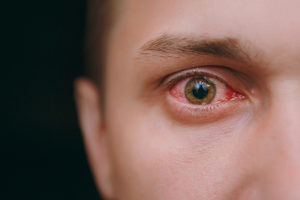New Delhi, Nov 16 (IANS) People living in areas with increased exposure to PM10 can be at twice more risk of suffering eye infections, according to a study in the US.
Researchers from the University of Colorado Anschutz Medical Campus showed that clinical visits by patients suffering ocular surface eye conditions more than doubled when ambient particulate matter from air pollution was in the atmosphere.
Ocular surface disease (OSD) is a group of eye conditions that affect the surface of the eye, including the cornea, conjunctiva, and eyelids.
“The World Health Organization has declared climate change to be “the single biggest health threat facing humanity,” said lead author Jennifer Patnaik, Assistant Professor of epidemiology and ophthalmology at the University of Colorado School of Medicine.
“Yet there are limited studies on the impact of climate change-related air pollution on ocular health,” Patnaik added.
In the study, the team examined the link between ocular surface irritation and allergy-related daily outpatient office visits with daily ambient particular matter (PM) levels in the Denver Metropolitan area.
About 144,313 ocular surface irritation and allergy visits to ophthalmic clinics were recorded.
The daily visit counts were 2.2 times higher than average when PM10 concentrations were 110. The clinic visit rate ratio increased as daily concentrations increased, the researchers said. Notably, conjunctivitis represented one-third of all the visits.
The study, published in the journal Clinical Ophthalmology, is among the first to look into how climate change may affect the eyes.
Patnaik said the health risks of air pollution and climate change span a wide range of outcomes including infectious disease, weather-related morbidity, and a variety of lung, kidney, and cardiovascular maladies.
The study may also be significant for India, even as the northern areas continue to suffer from severe air pollution.
For the fourth consecutive day, the national capital continues to battle a worsening pollution crisis, with its air quality plunging into the ‘severe’ category.
A dense smog has blanketed the city, with the Air Quality Index (AQI) recorded at 406 on Saturday morning, according to the Central Pollution Control Board (CPCB).
The smog and pollution are also causing other health concerns, including respiratory distress, and heightened risks of cardiovascular complications.
–IANS
rvt/


Comments are closed, but trackbacks and pingbacks are open.